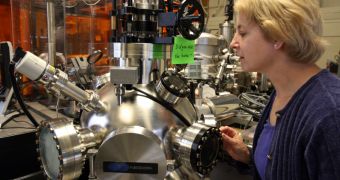There is a limit to what today's computing technologies can do, but researchers are on the problem, one possible solution being photonic chips, which just got a bit closer to our time.
Researchers from Massachusetts Institute of technology (MIT) have been trying to make viable photonics-based technologies feasible for some time.
Now, they might just have achieved their goal, or at least fulfilled the main condition for that achievement.
They were able to come up with a means of allowing photonic chips to be created on the same, standard material as today's electronics: silicon.
Photonic chips use light instead of electrons to perform computational tasks.
The problem that hadn't been surmounted until now was efficiency, or lack thereof: light beams may transmit data, and multiple such beams can coexist on the same optics fiber, but they still have to be processed through electronic circuits and converted to light again, using lasers. This can cause instability and impacts efficiency.
The new “diode for light” that the MIT research team invented will process the signal directly (the electron-conversion steps are unnecessary).
“This may be the next generation in terms of speed” stated Caroline Ross, the Toyota Professor of Materials Science and Engineering at MIT.
Garnet was the solution, a material that is both transparent and magnetic, even though it is normally hard to grow on silicon wafers.
Its advantage is that it transmits light differently in one direction than in another, because the index of refraction is not the same, so light is bent differently.
Basically, photonic chips can be made now, or will soon enough, all the while using the same microchip manufacturing machinery that exists today.
“A silicon platform is what you want to use,” says Bethanie Stadler, a professor of electrical and computer engineering at the University of Minnesota, who worked with MIT.
“There’s a huge infrastructure for silicon processing. Everyone knows how to process silicon. That means they can set about developing the chip without having to worry about new fabrication techniques.”

 14 DAY TRIAL //
14 DAY TRIAL //